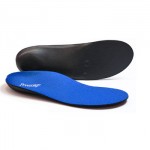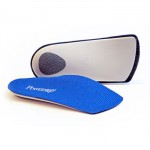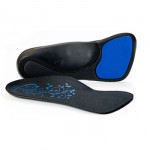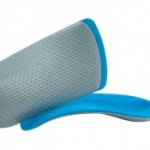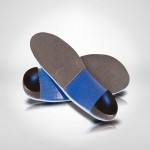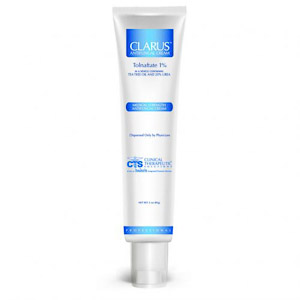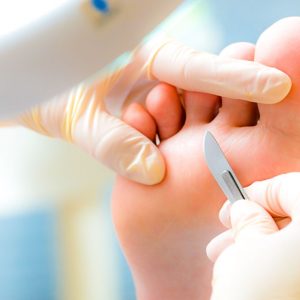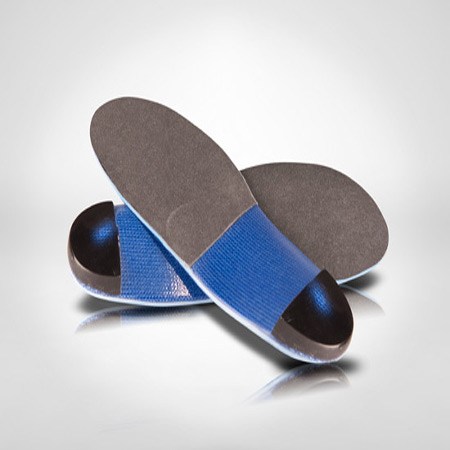
Athletic Orthotics are wider,have a heel post, more flex, the top cover is up to the patient
Custom functional orthotics are designed to gently realign the bones of the foot to a
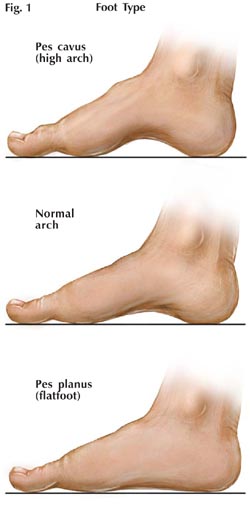
Foot Types Based on Arch
more adventurous position for running and walking. Many types of foot pain are associated with over pronation. Over pronation occurs when the foot is allowed to flatten, this allows a cascade of disadvantageous events to occur. If you are sitting in a chair pronate or flatten your foot- notice your knee wants to go inward. Do the reverse- create an arch- notice how your knee moves out (externally rotates) – this is called the windlass mechanism. These rotations are transferred up the legs through the hips and into the back.
Custom Functional Orthotics work to control these motions and ultimately balance them as people carry on with their everyday lives. Custom functional orthotics are not like the “custom orthotics” people buy at the Good Feet Store, those are prefabricated arch supports fit to a “normal foot.” Custom functional orthotics are constructed from a mold of your foot in a CORRECTED position. This CORRECTED position is called the neutral position. Podiatrist identify this position as we move your foot through its pronation/supination range of motion, when the bones in your foot align perfectly, and the lateral arch is locked, we know your foot is in its neutral position. This is the most important step in prescribing orthotics- this should be done by a Podiatrist.
Other balancing features are often incorporated into orthotics to match the position of the forefoot (ball of the foot) to the rearfoot. Occasionally, some people have anomalies in their bone or ligament structure which will require additional modifications to the custom functional orthotics to assure a proper fit and proper fit. Many of these features are not visible to the untrained eye, they look similar to prefabricated orthotics though they are not.
Pre Fabricated Arch Supports
- Powerstep full length
- Orthotics
- Powerstep Slender Fit
how to wear Orthotics
Here are some tricks to getting the most out of your orthotics, follow these basic steps to maximize your orthotics. The orthotic is the hard plastic or carbon fiber piece, the top cover is the padded layer on the upper surface.
- Always place your custom functional orthotics on the midsole of the shoe- this is the platform under the foam, neoprene, or leather insole, then place your insole on top of your custom functional orthotic if you do not have a top cover for your orthotics. If you do have a top cover on them remove the insole altogether.
- Make sure your shoes have removable insoles- some companies insist on gluing them in- if they do- do not buy their shoes for orthotic wear.
- Buy shoes that have a more rigid midsole, shoes that can easily be bent or twisted in any direction do not offer solid platform for your orthotics.
- Evaluate your shoes regularly, the materials used to construct shoes break down over time. When the materials break down and wear it can change the way they support orthotics, this can make your custom functional orthotics seem uncomfortable.
- Make sure your custom functional orthotics are designed for the shoes you will be wearing. They can be constructed narrower for dress shoes or wider for running shoes, walking shoes, ski boots, or even some sandals. It is important your orthotics are fit to the shoes you wear or will be wearing. The materials, width, heel cups and posts may be different, there is a difference, trust us. You don’t take your reading glasses to watch a baseball game and you should not take your dress orthotics to the gym.
-
- Custom Orthotics
- Athletic Orthotics are wider,have a heel post, more flex, the top cover is up to the patient
- Break your orthotics in, I normally tell my patients to wear them 1 hour the first day and increase the time by 1 hour per day, at the end of a week you are at nearly a complete day. This is the case for most patients, however, as you practice podiatry or any medicine for that matter you quickly realize people have different tolerances. Some are able to wear them all day from the start while others may need 10 days to acclimate to their new orthotics. Don’t over do it with new orthotics!!!
- Don’t over do it with new Orthotics!!! refer to #7
Dr. Terry Oehler DPM

